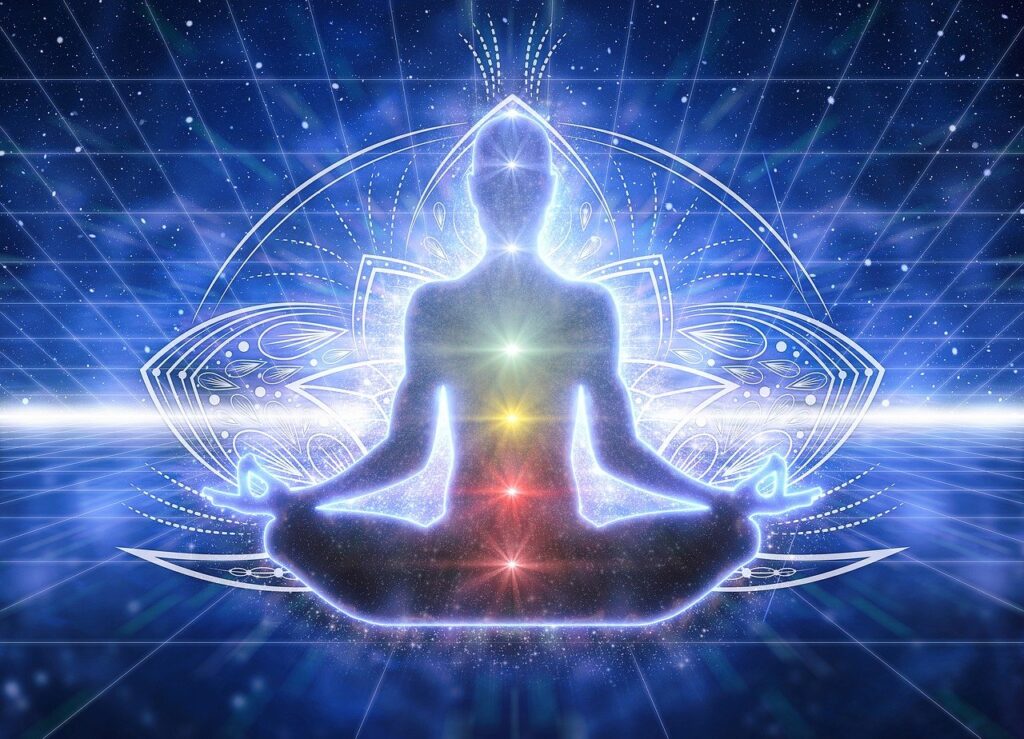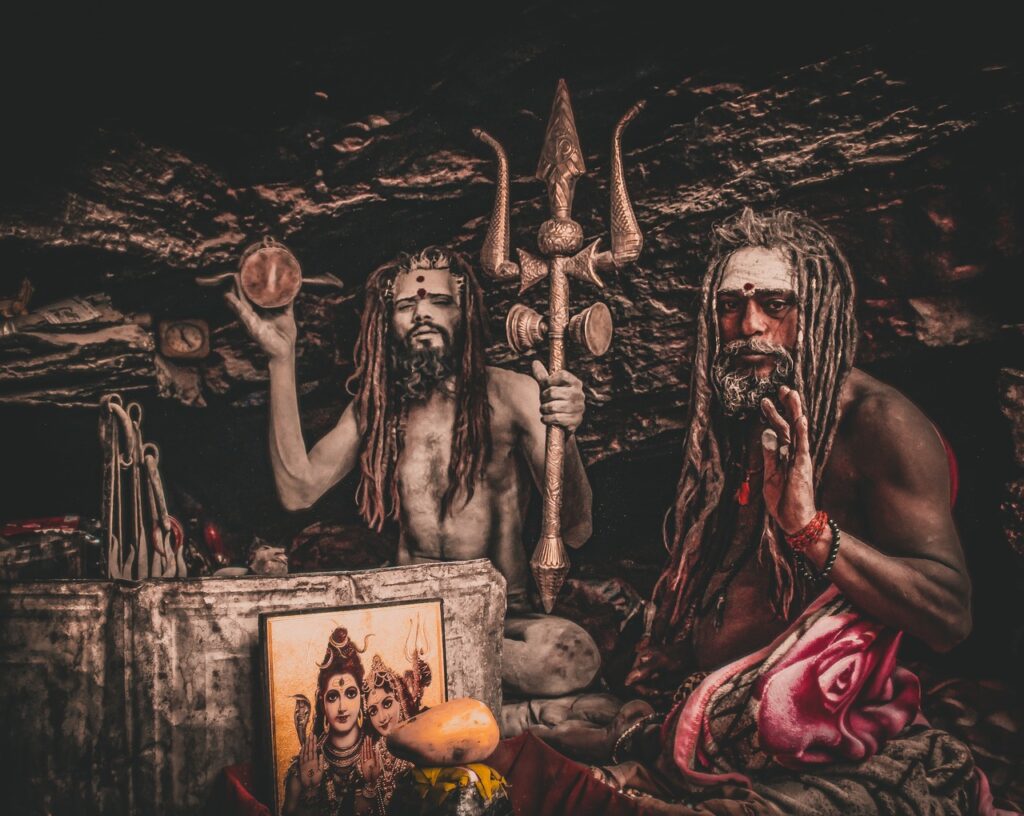
This article aims to explore the multifaceted concept of ‘Dharma’. We will provide a comprehensive understanding of Dharma, its significance in individual and societal growth, and the interrelationship between the various categories of Dharma, namely ‘Sanatan Dharma‘, ‘Varnashrama Dharma‘, and ‘Sadharana Dharma’. Additionally, we will delve into the four primary objectives of human life and the pivotal role that Dharma plays in achieving them. Through this discussion, we hope to offer a deeper understanding of this essential concept of ‘Dharma’ and its relevance in contemporary society.
#1 Definition – Meaning of Dharma
The term ‘Dharma’ is often understood to mean ‘duty’ or ‘religious duty’ in English, but its roots in Sanskrit reveal a much deeper meaning. The Sanskrit word ‘dhri’, from which ‘Dharma’ is derived, means ‘to sustain’, indicating that it encompasses something essential and fundamental to the very existence of things. ‘Dharma’ refers to a set of laws or principles that govern and maintain order in society, and it is not limited to religious or moral codes. In fact, ‘Dharma’ is the inherent nature of things, which is essential to their existence and functioning.
Sacred texts and stories illustrate ‘Dharma’ as the actions that are most conducive to maintaining the harmony and order of family and society. It is the underlying principle that holds together the structure of an organized system. Therefore, it is not surprising that scholars have provided multiple one-word translations of ‘Dharma,’ including “law,” “duty,” “custom,” and “model.”

The inherent nature of things also has its own ‘Dharma,’ as illustrated by the examples of fire and water. The ‘Dharma’ of fire is its heat and light, while the ‘Dharma’ of water is its liquidity.
There are two principal types of ‘Dharma’: ‘sanatana-dharma’ and ‘varnashrama-dharma.’ ‘Sanatana-dharma’ refers to the eternal principles that govern the universe, while ‘varnashrama-dharma’ pertains to the duties and responsibilities of individuals based on their social status and stage of life. Additionally, there are general moral codes known as ‘sadharana-dharma.’
In summary, ‘Dharma’ is a complex and multifaceted concept that goes beyond the simplistic translations often used in English. It encompasses the laws and principles that govern and maintain order in society, as well as the inherent nature of things that are essential to their existence and functioning.
#2 What is Sanatan Dharma ?
Sanatan Dharma is a complex and ancient religious and philosophical tradition that has evolved over thousands of years. It encompasses a wide variety of beliefs, practices, and traditions, and is one of the oldest surviving religions in the world. At the heart of Sanatan Dharma is the concept of Dharma itself, which can be understood as the natural or eternal nature of an entity.
Every entity, whether living or nonliving, has an original fundamental nature that accompanies it throughout its existence. This nature is called the Sanatan Dharma of the entity, and it is considered to be eternal and unchanging. However, due to various circumstances, an entity may acquire a changed or acquired nature over time, which becomes firmly established and coexists with its original eternal nature. This acquired nature is called the ‘naimittika dharma’ of the entity.

For example, the Sanatan Dharma of water is liquidity, which is its essential and fundamental nature. However, when water freezes into solid ice, its liquidity is no longer apparent, and instead, the solidity of ice becomes its acquired characteristics. Nevertheless, the acquired nature is never permanent and arises due to temporary circumstances. As soon as the circumstance changes, the entity regains its original nature. In our example, the solid ice changes back into liquid water once the freezing conditions are eliminated.
In the case of living entities, the term ‘living being’ refers to all spirit souls that are embodied in different species of life. Dharma is a characteristic of the soul that remains independent of the type of body in which it resides. The original nature of the soul is eternal and prevails, even if the soul acquires a modified nature. Although the original nature may lie dormant for some time, it will manifest itself openly when the conditions are favorable.
Unlike faith, which may vary depending on personal beliefs or cultural influences, Sanatan Dharma is not subject to alteration or manipulation. It is an integral aspect of an entity’s existence and cannot be separated from its identity. This unchanging quality of Sanatan Dharma is what makes it a universal concept that can be applied to all living beings, regardless of their religious affiliation or cultural background.
According to Vedas, the eternal nature of living beings, including humans, is to perform service, or “seva.” This is a universal law that is beyond our belief systems. When we observe the world closely, we can see that every individual is engaged in serving others in some way or the other. A father serves his son, a son serves his father, a wife serves her husband, a doctor serves his patients, and a king serves his subjects. Even those who have no one to serve keep pets and take care of them. This is because the soul is inherently a servant and serving is a natural trait of the soul, as stated by Sanatan Dharma.
Therefore, all of us are bound to serve in one way or another. The Vedic scriptures, which are the oldest in the world, provide insight on this subject and conclude that man achieves perfection only when he serves the Supreme Lord. This service attitude is built on a foundation of loving relationships and is not based on obligation. The purpose of our existence is to render loving devotional service unto the Supreme Lord, recognizing Him as our eternal object of love.
In conclusion, Sanatan Dharma provides a unique and profound understanding of the nature of existence and the purpose of life. It recognizes the inherent qualities and characteristics of all entities, whether living or nonliving, and emphasizes the importance of performing service as a natural expression of the soul’s nature. Through this service, we can develop a loving relationship with the Supreme Lord and achieve perfection in our lives.
#3 What is Varnashrama Dharma ?
In Hinduism, the Varnashrama dharma is considered a natural system of classification, which is present to varying degrees in all human societies. This system acknowledges that individuals possess different innate tendencies for work and exhibit a variety of personal qualities. Moreover, there are natural phases in life, when it is easier and more rewarding to perform certain activities. The Hindu teachings suggest that individuals are more likely to realize their full potential when they take these natural arrangements into account, and when society is structured and organized accordingly.

In this system, each varna (class) and ashram (stage of life) has its own specified dharma (duty or code of conduct). For instance, what may be desirable for one section of society may be considered degrading for another. This is exemplified in the case of non-violence, which is essential for the priestly class, but may be considered unworthy of a kshatriya (warrior). Similarly, generating wealth and producing children are important for householders, but for the renunciate, intimate contact with money and women is considered spiritually detrimental.
Despite these differences, the ultimate goal of Varnashrama dharma is to advance in spiritual life based on Sanatana Dharma, which refers to the eternal nature or characteristics of an entity. Sanatana Dharma is a universal concept that is not subject to alteration or manipulation, and it is an inherent aspect of an entity’s existence that cannot be separated from its identity. When Sanatana Dharma is not present, Varnashrama dharma tends to degrade into the rigid and exploitative caste system, which has been a persistent issue in Hindu society.
The Varnashrama Dharma is a natural classification of human society according to innate tendencies and personal qualities, with each varna and ashram having its own specified dharma. The Brahmanas are the priestly class who possess qualities of peace, self-control, austerity, and knowledge, and guide society toward prosperity and self-realization. The Kshatriyas are the administrative and warrior class, who protect society and make sure citizens adhere to the path of self-realization. The Vaishyas are farmers and businessmen responsible for creating wealth and prosperity in society, while the Shudras are employed by the other varnas and offer their labor and service. Each varna has its own duties and responsibilities to maintain the society in a spiritually advanced and prosperous way.

The division of society based on Ashramas reflects the natural phases of human life, each with its own set of duties and responsibilities. The first stage, Brahmacharya, is a time of education and self-discipline, during which the individual focuses on acquiring knowledge and developing virtues such as self-control and austerity. The second stage, Grihasta, is the time of family life, during which the individual takes on the responsibilities of marriage, raising children, and contributing to society through work and service. The third stage, Vanaprastha, is a time of retirement, during which the individual gradually withdraws from worldly responsibilities and prepares for spiritual pursuits. Finally, in the stage of Sannyasa, the individual renounces all material attachments and focuses entirely on spiritual pursuits, seeking liberation from the cycle of birth and death.
The Ashramas system emphasizes the importance of each stage of life and recognizes the unique contributions that individuals can make at each stage. It also provides a framework for individuals to gradually progress towards spiritual realization and liberation, while fulfilling their social and familial responsibilities. The ultimate goal of the Ashramas system is to help individuals achieve inner peace and spiritual enlightenment, by following the path of dharma or righteous conduct, which is the foundation of a harmonious and prosperous society.
Therefore, it is crucial to understand that the Varnashrama system is not a man-made system but rather a natural arrangement. When approached with the understanding of Sanatana Dharma, it can provide a framework for individuals and society to realize their full potential and advance in spiritual life.
#4 What is ‘Sadharana Dharma’ ?
Sadharana-dharma refers to the basic code of conduct and morality that applies to all members of society, regardless of varna or ashramas. This includes the ethical principles of yama, which are prohibitions that individuals should observe in order to maintain social harmony and personal integrity. The yamas include ahimsa (non-violence), satya (truthfulness), asteya (non-stealing), sexual restraint, and aparigraha (non-hoarding).
In addition to the yamas, there are also niyamas, which are positive practices that individuals should cultivate to achieve spiritual and personal growth. The niyamas include saucha (cleanliness), santosha (contentment), tapas (austerity), svadhyaya (study of the self and scriptures), and Ishvara pranidhana (surrender to God).

Together, the yamas and niyamas provide a comprehensive framework for ethical behavior and spiritual development of an individual. By observing these principles, individuals can lead a virtuous life and contribute to the betterment of society as a whole.
Sadharana Dharma is the mode of conduct most conducive for spiritual growth, but ethical guidelines should not be followed blindly as they may become adharmic if they hinder spiritually uplifting endeavors. The subtleties of dharma require careful discernment and reflection when applying religious principles. In the Mahabharata, Krishna shares with Arjuna a tale about a saint who made a vow to never lie. However, when a group of innocent people sought refuge from bandits at the saint’s ashram, the saint’s commitment to his vow led to the bandits discovering and killing the innocent group. This story highlights the importance of not blindly following ethical principles, as the complexities of dharma necessitate reflection and discernment in their application.
#5 Dharma, Artha, Kama, Moksha – Four Goals of Life
According to the Vedas, the path towards a fulfilling and balanced life involves a holistic pursuit of four goals – right actions (dharma), material security (artha), material happiness (kama), and spiritual liberation (moksha). While these four goals are meant to complement each other and support the pursuit of liberation, they can also be viewed as a linear progression. Proper actions lead to wealth, which in turn enables access to material comforts. Being content with material comforts allows individuals to cultivate a peaceful mind conducive to spiritual growth.

Dharma serves as the core foundation from which all other goals are achieved. It is believed that by adhering to dharma, individuals can live in a way that best serves themselves and those around them. This is why dharma is often referred to as the law of righteousness. It provides guidelines on ethics, behaviors, and traditions that aim to help individuals fulfill their highest potential.
In essence, dharma is not simply a set of prohibitions and recommended practices, but a way of life that encompasses all aspects of an individual’s being. It promotes the pursuit of right actions and the cultivation of virtues that aid in spiritual growth. Therefore, living in accordance with dharma requires careful discernment, reflection, and a commitment to self-improvement.